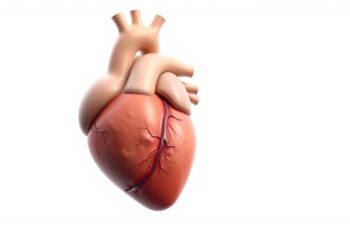Ad Blocker Detected
Our website is made possible by displaying online advertisements to our visitors. Please consider supporting us by disabling your ad blocker.
Valvular Heart Disease (VHD)—sounds technical, doesn’t it? But it’s really about the small but mighty heart valves, those unsung heroes directing blood flow in one direction only. Picture them as gatekeepers: sturdy when healthy, but if weakened or damaged, things can go awry. Whether they narrow (stenosis) or spring a leak (regurgitation), their failure to perform disrupts the delicate rhythm of the heart, leaving behind a trail of symptoms and complications.
Getting to Know Your Heart Valves
Let’s talk heart anatomy for a second—just four valves, yet their job is colossal:
- Mitral valve: This one’s on the left side, between the atrium and ventricle, shuttling oxygen-rich blood.
- Aortic valve: It guards the exit to the aorta, your body’s blood superhighway.
- Tricuspid valve: Over on the right, it manages blood flow to the lungs.
- Pulmonary valve: Sends blood toward the lungs for a breath of fresh oxygen.
Each valve is like a precision-engineered hinge. Age, infections, birth defects, or even a rogue medication can disrupt their flow and structure. Think of it as gears in a clock—if one cog sticks or grinds, the whole mechanism falters.
What’s Breaking These Valves Down?
Here’s a cheat sheet on the culprits:
- Aging: Just like creaky knees, valves get stiff and lose their flexibility over time.
- Infections: A simple strep throat gone rogue can lead to rheumatic fever, damaging valves long after the sore throat fades.
- Congenital defects: Some valves are imperfect from day one.
- Heart attacks: The damage doesn’t stop at muscles; valves close to the attack site can falter too.
- Drugs: From some medicines to illegal substances, what you consume might not be as harmless as it seems.
Is It VHD, or Something Else?
Here’s where things get tricky: early VHD can sneak by unnoticed, only whispering its presence with symptoms you might ignore:
- A little breathlessness climbing stairs? Could be the first hint.
- Fatigue? Maybe just a bad night’s sleep—or not.
- Chest pain or fluttery palpitations? They raise eyebrows but also overlap with countless other issues.
Even leg swelling, dizziness, or a nagging cough might connect to your valves. Let’s face it: the symptoms are vague, yet they scream for attention when combined.
Who’s at Risk?
Some folks are just dealt a risky hand:
- Seniors: Time spares few of us.
- Family ties: A genetic predisposition may lurk in your DNA.
- Infections: Especially if you’ve had rheumatic fever.
- Other health issues: High blood pressure, diabetes, and even pregnancy can amplify risks.
What’s the Fix?
The solutions? A mix of old-school wisdom and modern marvels:
- Medications to relieve symptoms—like diuretics for fluid retention or blood thinners to keep clots at bay.
- Lifestyle tweaks: Eating smarter, moving more, and ditching harmful habits.
- Surgery: Sometimes, there’s no escaping the knife, whether for repairs or a complete valve replacement.
Can You Dodge VHD?
Not always, but why not stack the odds in your favour? A clean lifestyle, prompt infection treatment, and regular checkups can be your best defence. Avoiding the slippery slope of substance abuse and managing chronic conditions like diabetes or hypertension also help.
In the End
Valvular Heart Disease is as much about knowing your risks as it is about staying vigilant. Catching symptoms early or recognizing vulnerabilities can mean the difference between thriving and struggling. And while it may sound daunting, modern treatments have transformed it into a manageable condition for many.
Always remember: your heart’s valves may be tiny, but they’re mighty—treat them kindly.
Note: This isn’t a substitute for medical advice. Always seek out a qualified healthcare professional for concerns about your heart or overall health.






